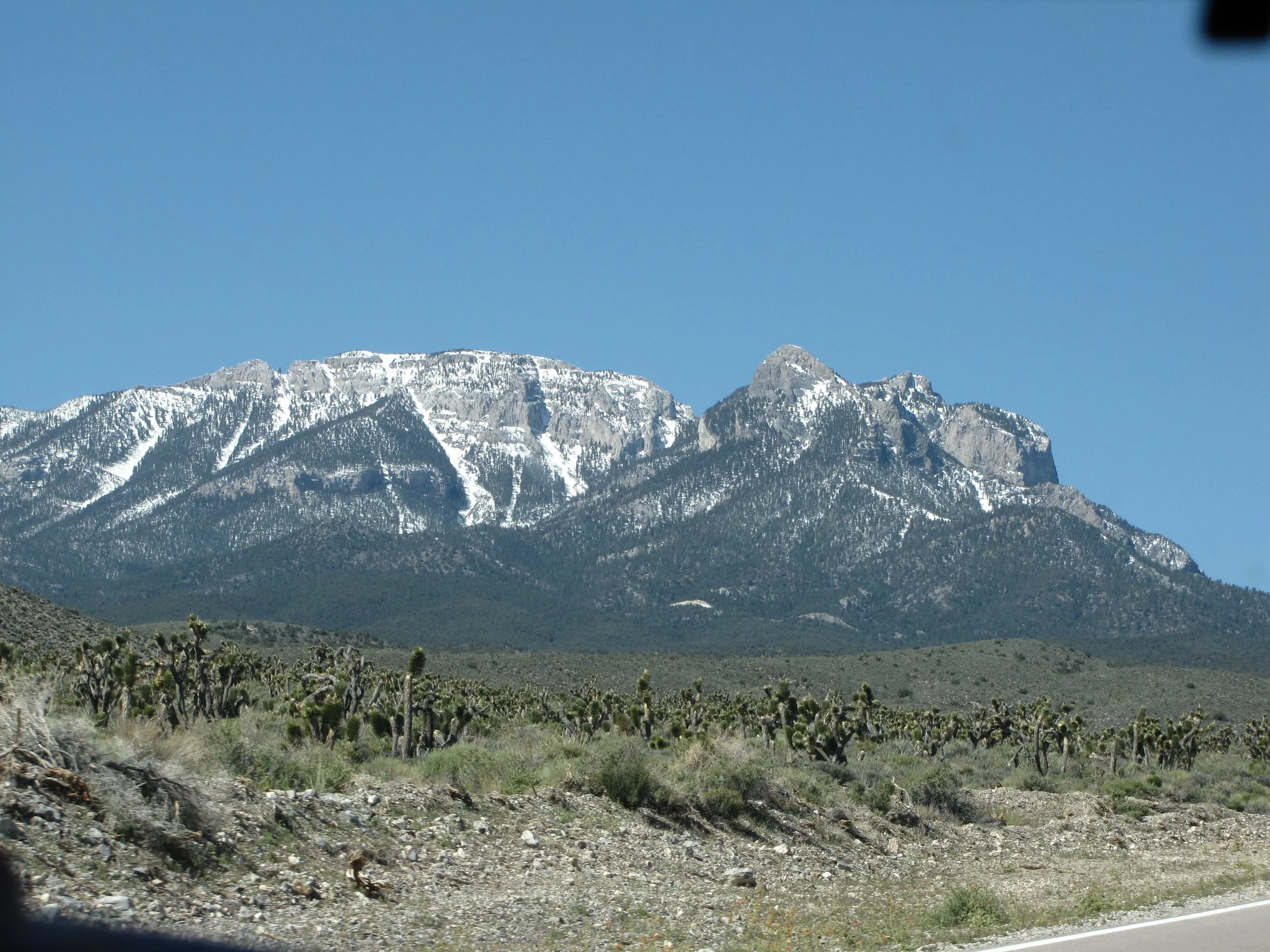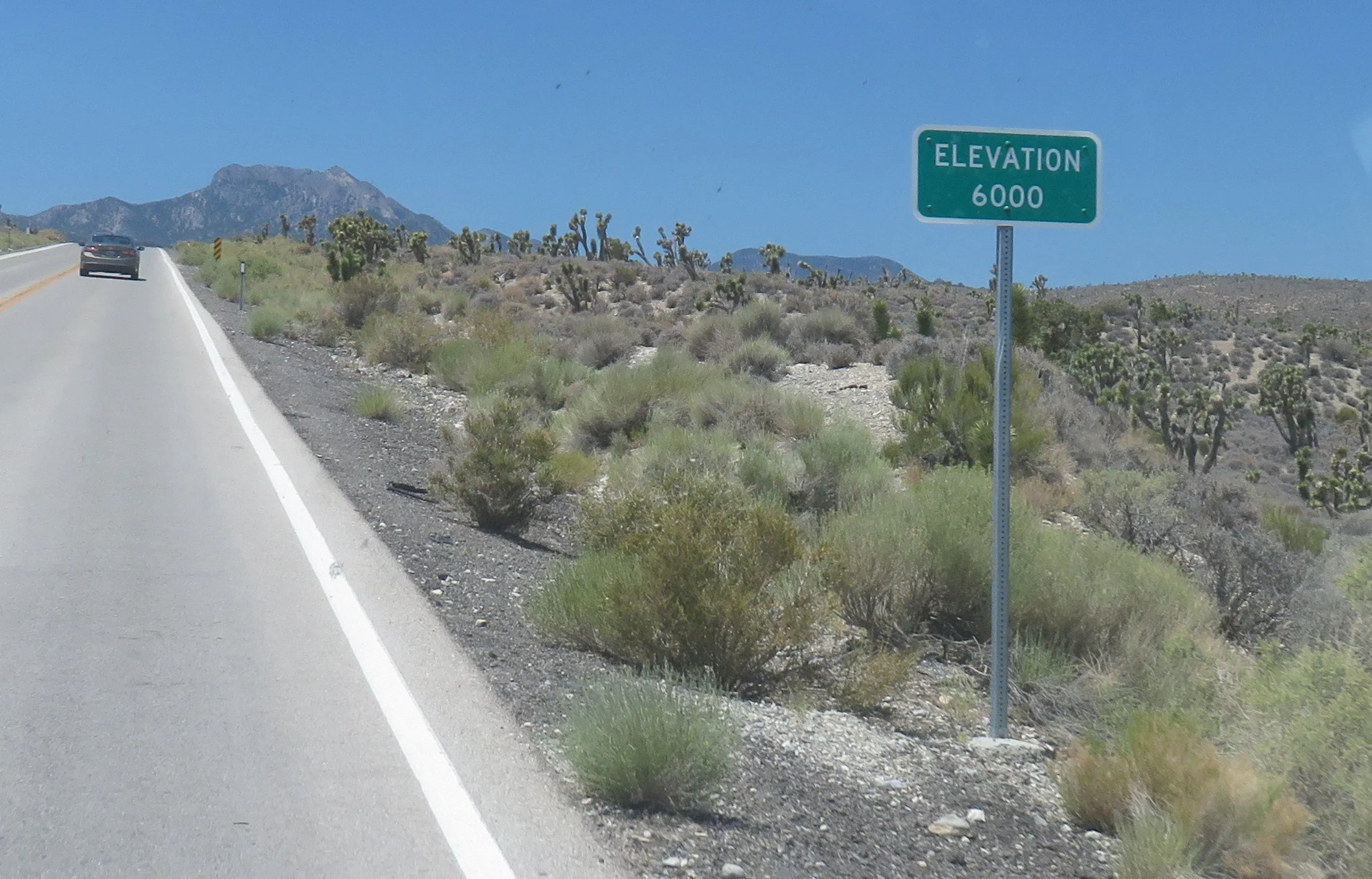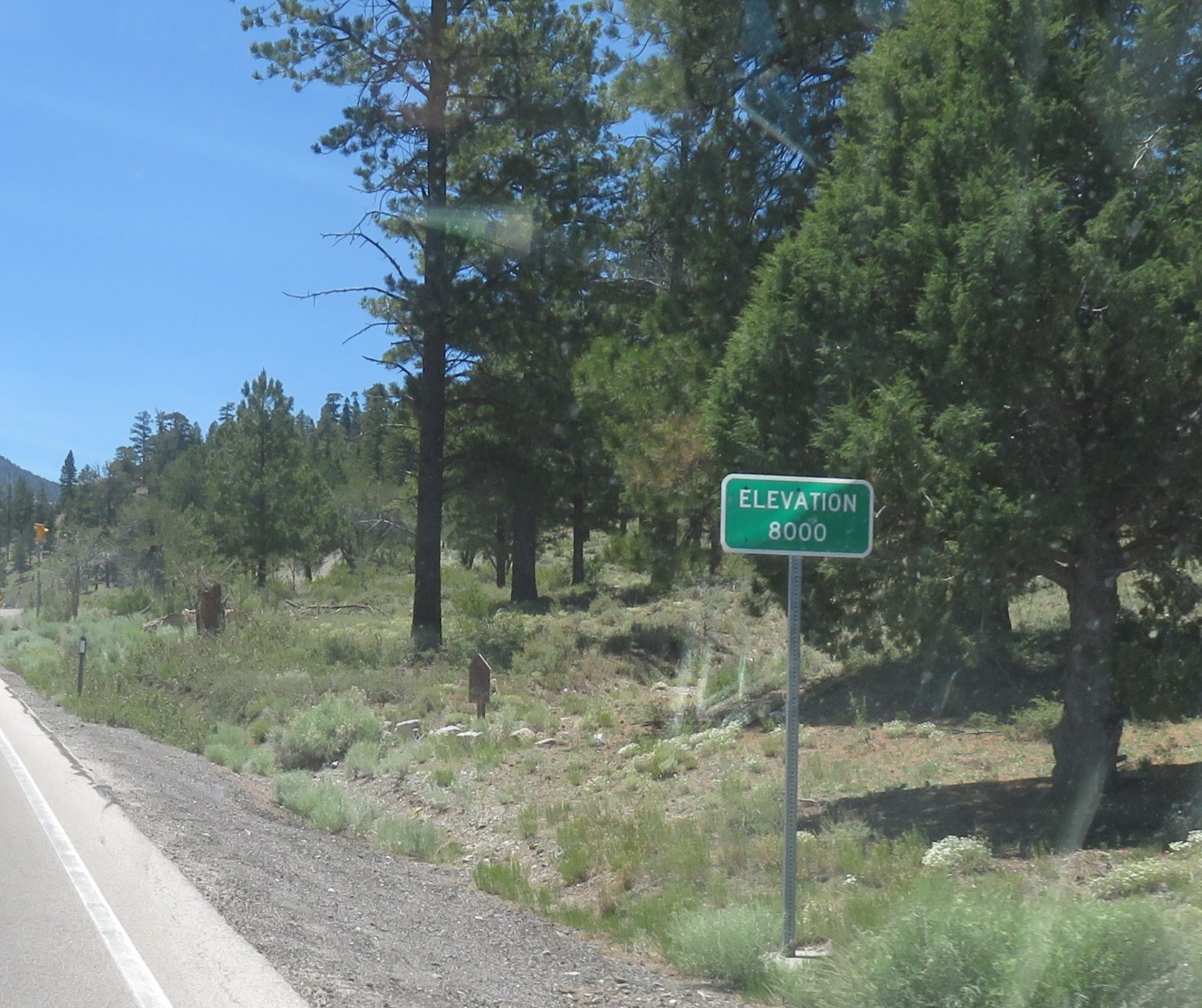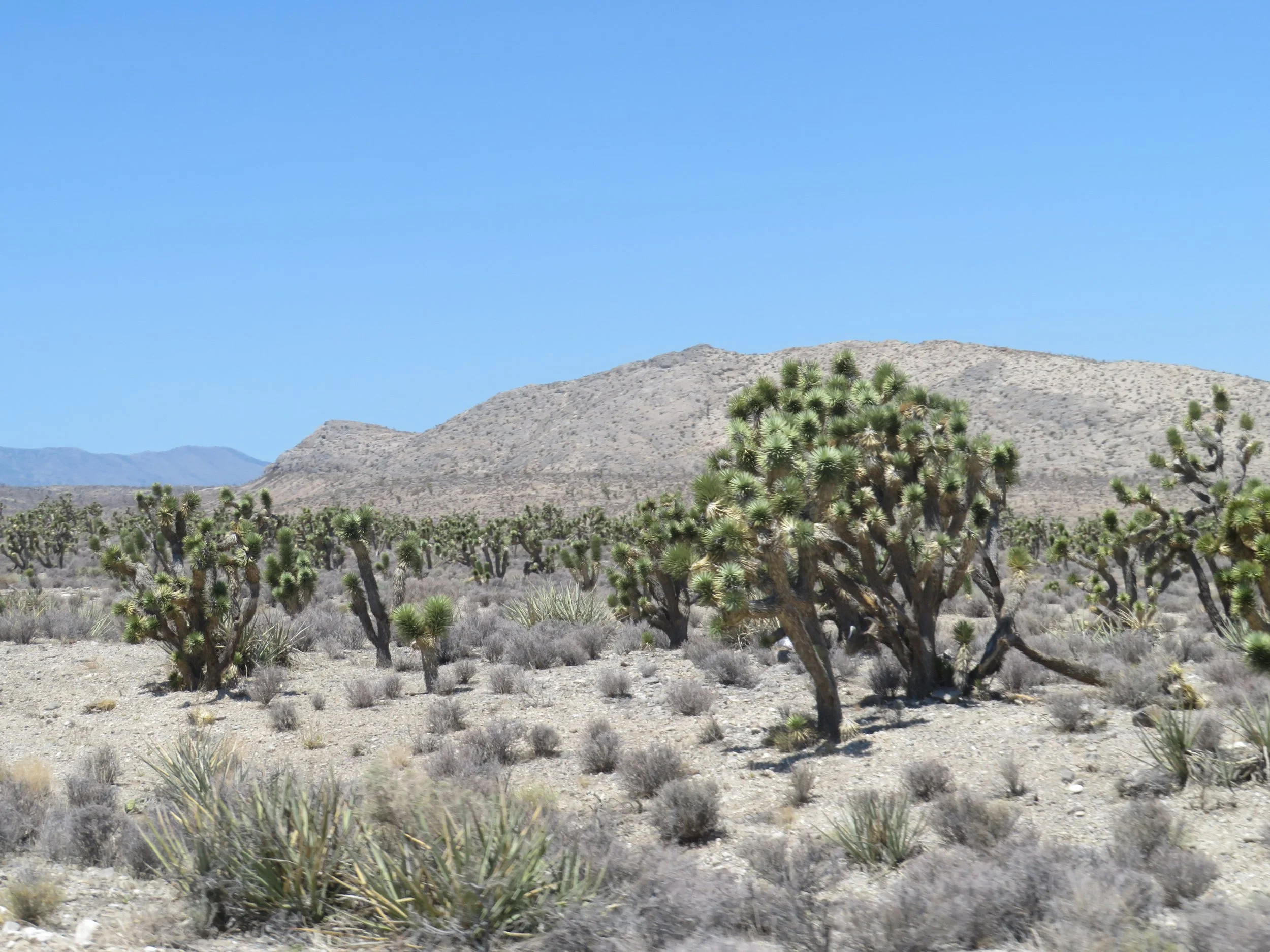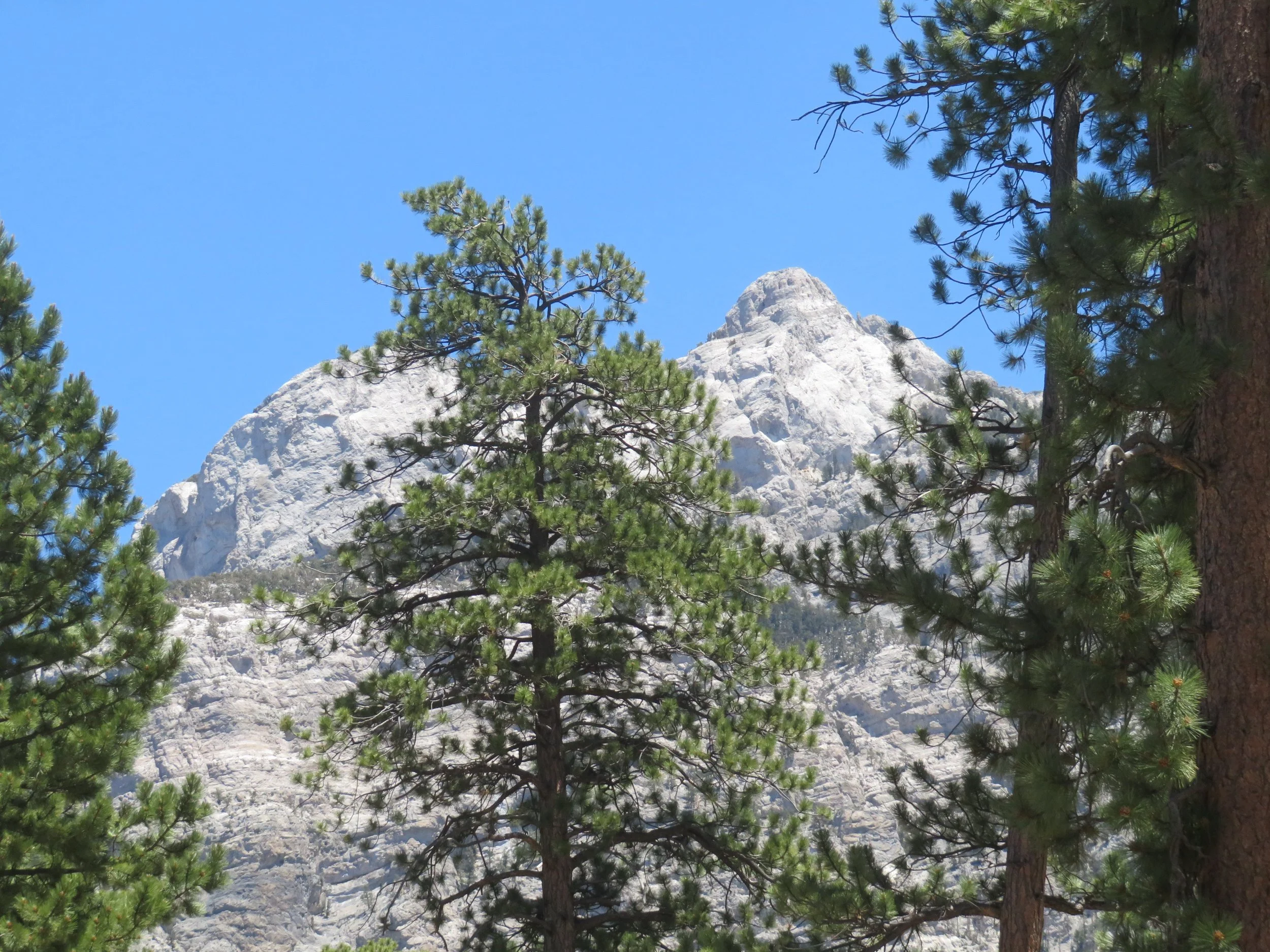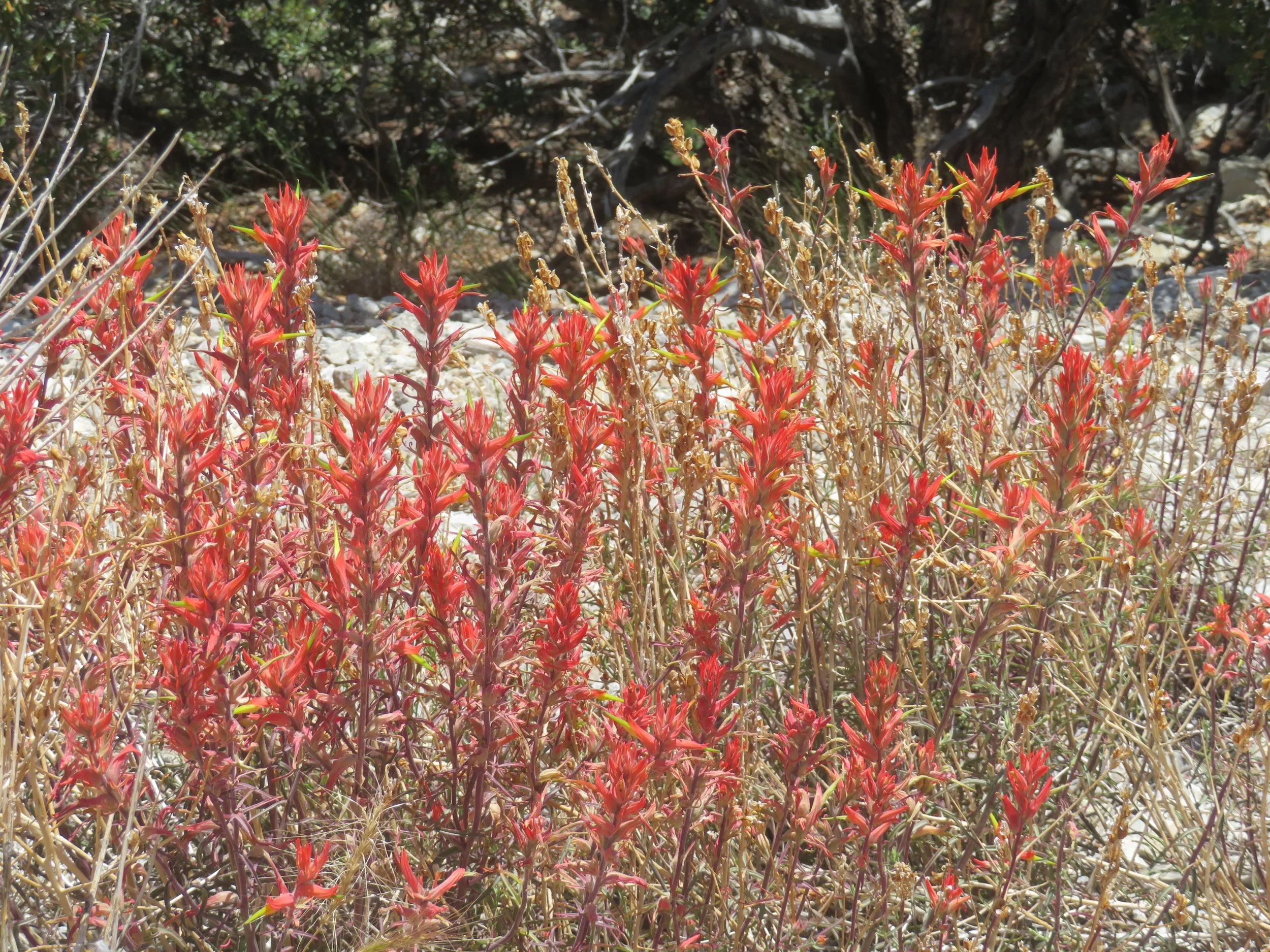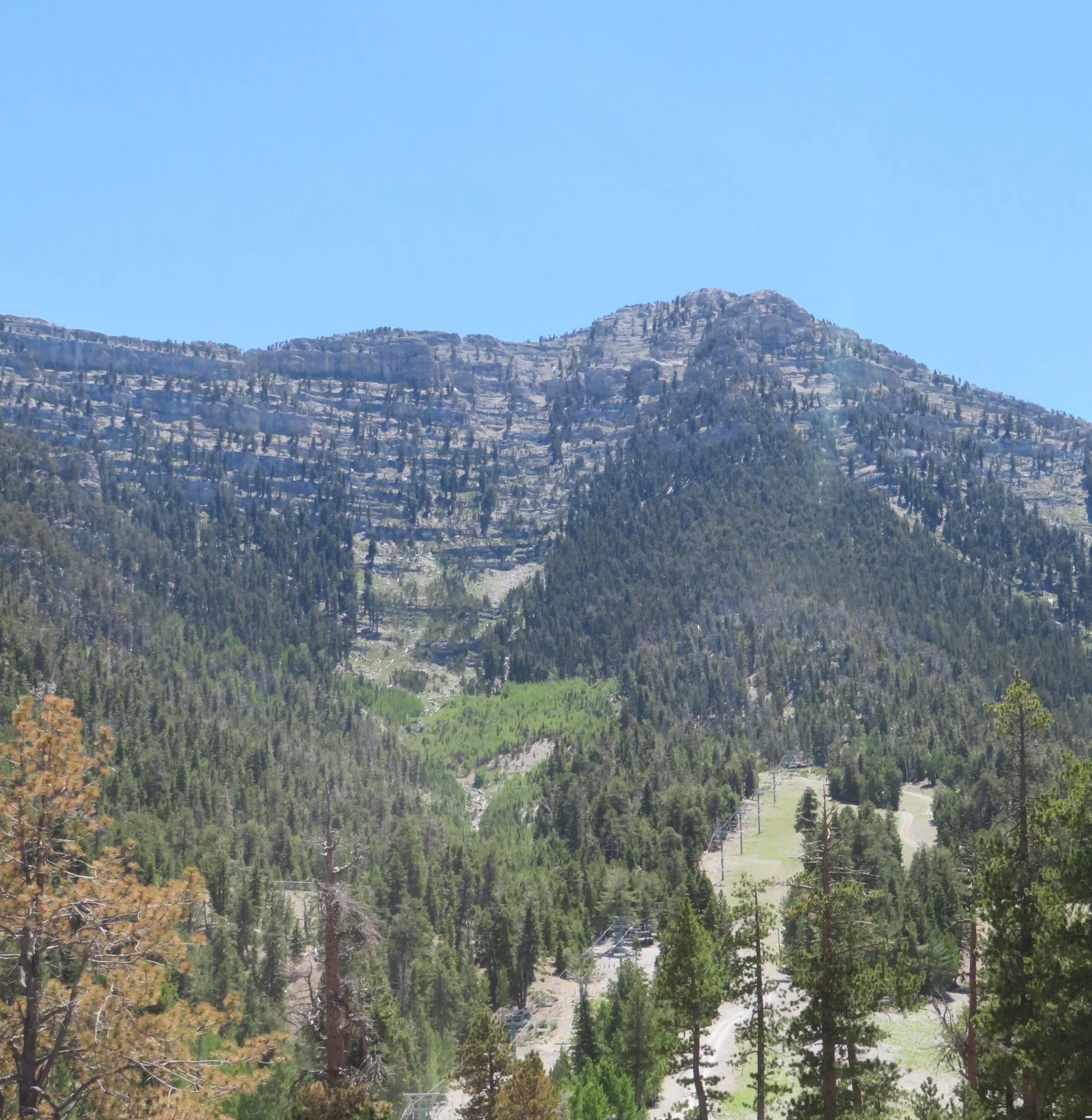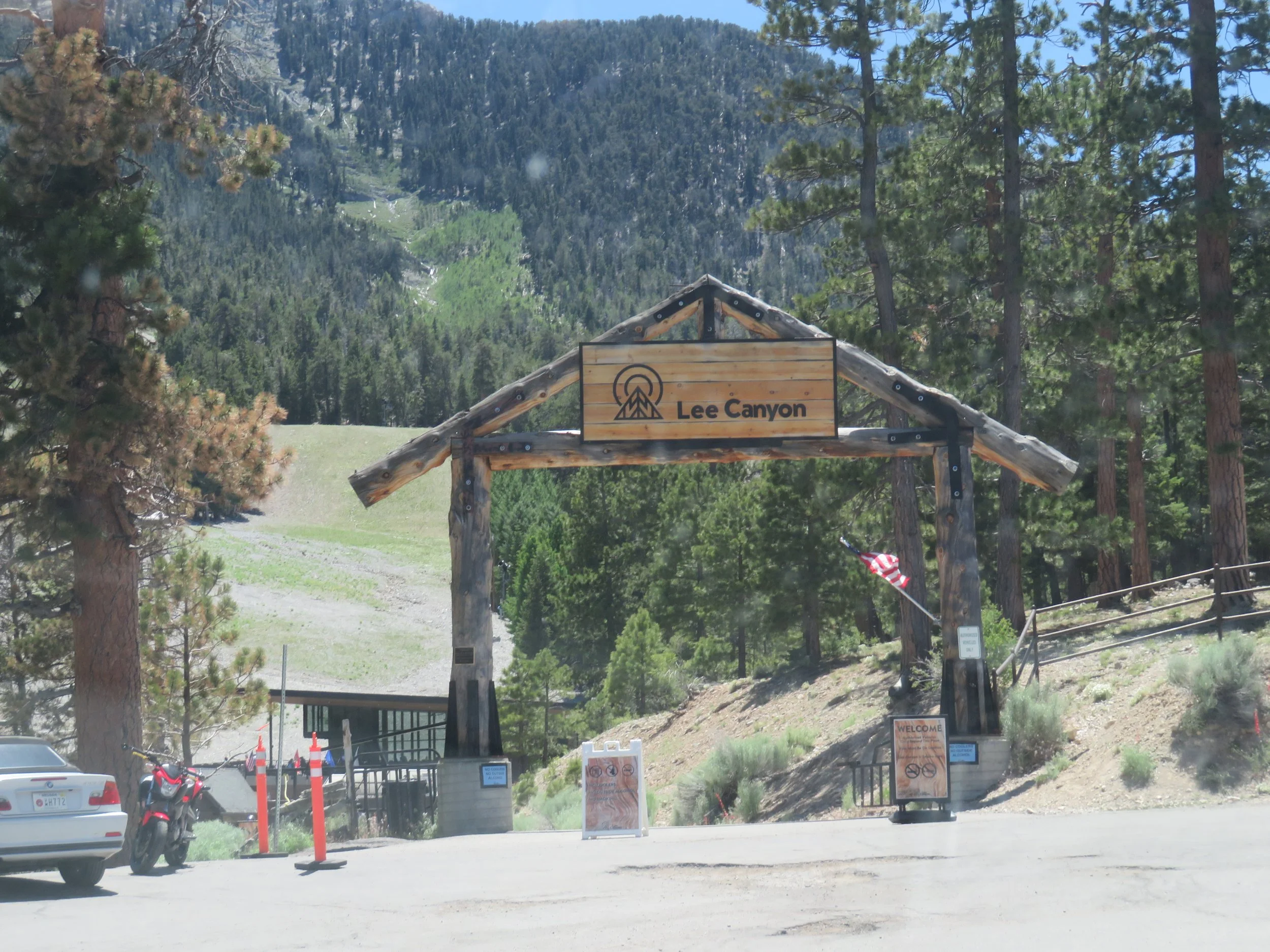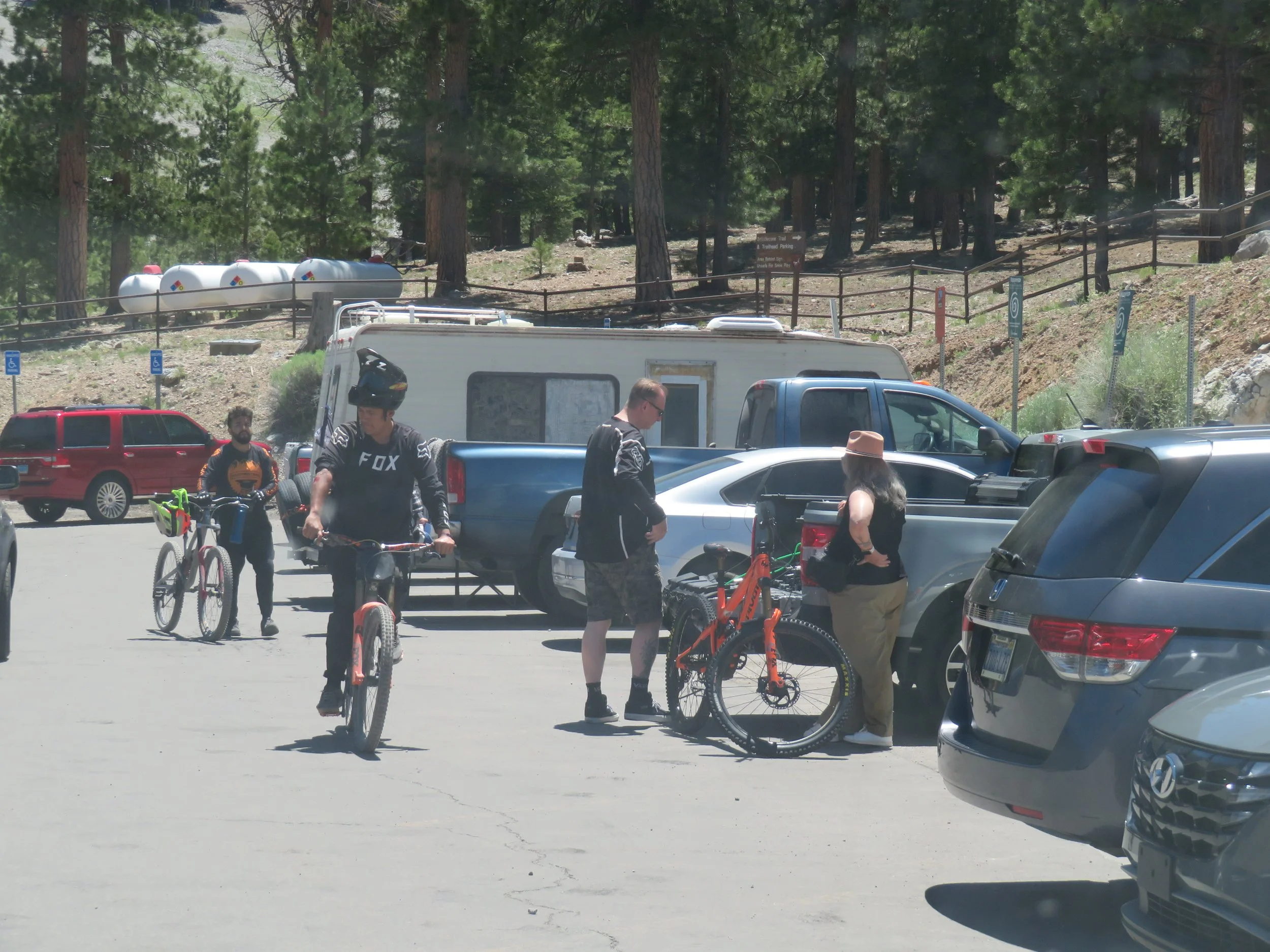Exploring Mount Charleston – Lee Canyon
/The Paiutes called it Nuvagantu, “where snow sits”. In the winter, it’s the place to go skiing in Las Vegas. In summer, we call it a welcome respite from the Mojave Desert’s relentless heat… Mount Charleston. At 11,916 feet (3,632m), it is the highest mountain in southern Nevada’s Spring Mountains and the fourth highest mountain in the state. Snow-covered for six months of the year or more, it looms over the Las Vegas Valley as a prominent feature of the western horizon, visible from the Strip and, on clear days, our front yard.
Mount Charleston with Joshua trees in the foreground. Photo taken in the late Spring.
It was a member of the US Army Corps of Engineers from Charleston, SC who named the mountain for his hometown as the corps surveyed the area for railroad construction back in 1869. Officially, it’s registered as Charleston Peak, but locals just call it ‘the mountain’.
It’s only about a 35 mile drive from our house and with temperatures settled in the triple digits for the past week, we decided we needed a break. We headed to the Spring Mountains National Recreation Area to cool off. We watched the temperature fall as we ascended scenic Lee Canyon Road (Nevada SR-156). Altitude markers at each 1000’ (305m) increment confirmed we were getting to the ‘cool’.
At 2000’ (610 m), it was 103° in Las Vegas when we left. David checked at 4,000’ (1219 m) and the temp had fallen to 93° and it just kept getting better and better… cooler and cooler. Our ears blocked and then cleared with a swallow or two.
The topography and flora changed with the altitude. From rocky desert and sage to a forest of western Joshua trees and pinyon pine to towering ponderosa pines, the difference was remarkable. We could see lingering patches of snow in shaded clefts of the mountains ahead.
We took a brief detour off Lee Canyon Road to check out the Desert View Overlook, a ¾ mile roundtrip walk on a graded, multi-level paved path with panoramic views of the valley and the white sands of the desert below.
Desert Overlook panoramic view
Desert paintbrush splashed bright color along the pathway.
We backtracked to the Lee Canyon Road and noted several trailheads along the way that network and crisscross the mountainside thinking that perhaps they might be good hikes in the future. A stop at the Old Mill Picnic Area provided a lovely shaded spot for a picnic under soaring pines. It’s a fee area, but with our National Parks Pass, we received free entry.
At 8,437 feet (2,572m), we came across Hilltop Campground. We’d never paid much attention to the campgrounds in this area. I’m not sure why. They’re close to home. They’re on federal land so camping fees are discounted for us. This time we took the time to suss them out and we’re glad we did. Hilltop was especially appealing. It offers 35 campsites, half reservable and half first come-first serve. As we drove through, we noted what we thought were the most desirable for future stays. It was a long list and on this particular Sunday afternoon, several sites were available. We might return soon for a camping weekend.
We finally made it to the base of Mt. Charleston and the Lee Canyon Ski Area which is the end of the road. It was crowded. Not with skiers, but with mountain bikers who were taking advantage of the designated biking trails on the mountain. There’s a restaurant and bar available for ‘on-mountain dining’ and great views. Scenic chair lift rides start at $14/pp. Since we were on a reconnaissance mission, we gave it a pass.
Lee Canyon and the slopes of the Lee Canyon Ski Area
There’s a restaurant and bar open daily during the summer months.
Lots of mountain bikers
There’s much more to Mt. Charleston than we were initially aware of. After living in the area for over 8 years, you’d have thought we’d be more attuned to what was available. We blame it on the fact we’ve never spent a summer in Las Vegas since moving here. We’ve always been on the move, usually North.
This year we’re staying local and we plan to revisit very soon to try out some of the hiking trails, visit the Spring Mountains Gateway Visitor Center, check out Kyle Canyon and the other campgrounds and get some relief from the desert heat.. We’re opening up a whole new world for ourselves.


